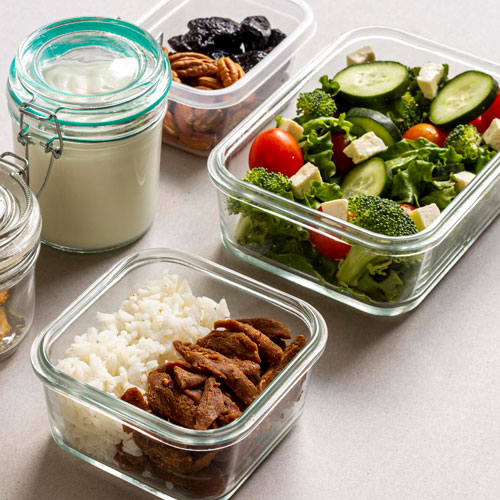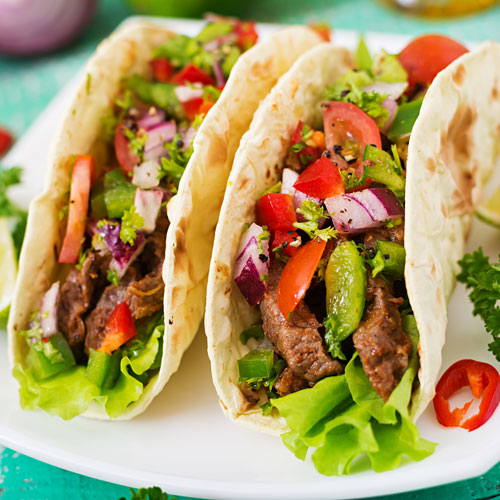Inflation and food costs are rising, but so is food waste
Canadians don’t have a ton of control over food costs, as profitable grocers claim inflation and supply as issues as causes for price increases. One thing in our power: household food waste.
Advertisement
Canadians don’t have a ton of control over food costs, as profitable grocers claim inflation and supply as issues as causes for price increases. One thing in our power: household food waste.

It’s no secret that food costs have been on the rise in Canada. Food inflation increased by 10.5% in 2022, and Canada’s Food Price Report expects another 5% to 7% jump in 2023. Despite grocery bills that leave us with serious sticker shock, we still have a significant amount of household food waste. In fact, on average, Canadian families of four throw away about 10% of all the groceries they buy. How much money is that? And how can you make key changes to reduce waste and not lose money on both ends? Find out the actual cost of what winds up in your green bin each week, plus practical strategies to save money—and benefit the planet.
So, how much food are you not eating and taking to the curb every week? “About 21% of avoidable food waste in Canada happens at the household level,” says Graham Hill, chief revenue and strategic affairs officer at Second Harvest, a non-profit that fights hunger and food waste. “It’s a significant amount, and there’s a variety of reasons for that. Every Canadian household wastes about 79 kilograms (176 pounds) of food every year—and we’re actually outpacing Americans by about 20 kilograms per person.” Those stats come from the UNEP Food Waste Index Report.
If your average grocery bill is $200 a week, and you’re paying roughly 15% more for groceries in 2023, you’re spending about $30 more per week—a $1,565 hike for the year. That is a lot, but it’s roughly equivalent to the $1,766 a year the average household wastes on food, based on research research from Statistics Canada and Second Harvest). You’ve probably been throwing away approximately that much food all along, so by putting some new strategies in place, you can hop in your DeLorean time machine and practically undo food inflation. Here’s how.
From getting creative with your leftovers to truly learning how to read best before dates—plus, getting weeks out of some groceries instead of just days—here are six strategies to slash food waste and save money.
When it comes to what contributes to household food waste, “Best-before dates are a significant factor contributing to food waste—best before does not mean bad after,” says Hill. “And this is the most pervasive one because we’re trained as a society that best before is synonymous with expired or no good.”
Hill says there are only five foods—baby formula, supplement bars, meal replacement drinks and prescription-only formulated liquid diets, and foods used on very low-energy diets—that we shouldn’t eat beyond their stamped date. Just about everything you eat regularly and that’s in your fridge—yogurt, eggs, even moldy cheese—can be eaten for much longer than you think. “Many people don’t know that you can cut the mold off a block of hard cheese and still use the rest of it. It doesn’t permeate.” Even if you don’t go that far, knowing that best-before dates are cosmetic dates unrelated to food safety will extend the shelf life of foods—and your budget. (In fact, Second Harvest is now lobbying the Government of Canada to remove best-before dates. The federal level has accepted to consider the recommendation, so we will see.)
So, how should you deem a food still fit for consumption? Rely on your senses—look, smell, and taste—and download Second Harvest’s Best Before Date Timetable with “eat by” dates for commonly tossed-too-early foods.

Planning meals ensures you only purchase what you need, reducing the likelihood of waste and—a big, expensive one—over-shopping. It’s good for the pocket book, and for peace of mind in managing a household.
Kathryn Kellogg is behind the popular sustainability blog Going Zero Waste and is the author of 101 Ways to Go Zero Waste (Countryman Press, 2019). She admits she’s a reluctant meal planner but says, “It has to start before you go grocery shopping. Have a plan.” As someone who doesn’t love meal planning, she says she does it to avoid food waste.
Kellogg suggests what she calls “The 5-Minute Meal Plan.” “Look at what you have in your fridge and write down what you need to eat first. Then go to the store and base your meals on what must be eaten first.” Plan your ingredient list into a shopping list. That could help avoiding tossing “extra” food in the cart. Online shopping and grocery delivery is great for that, too.
Another easy planning tip is to keep a list of favourite meals that rely on similar flavours and pantry staples (think Italian, so oregano, Parmesan, tomato sauce and noodles). This way, you can turn ingredients into everything from casseroles, pasta, pizza, calzones and chicken parm.
Another tactic Kellogg employs is to plan her weekly meals but always remove one before heading to the store. It works for her. “Something always comes up—whether you get invited out, or you’re just not hungry. And you can always go back to the store. Making two trips to the store is better than throwing food away.”
Knowing the best storage containers for different foods is crucial in extending their shelf life—and the tricks may surprise you. Tomatoes, for example, should be stored on the counter, not in the fridge. Lemons will last a month or longer when stored in a water bowl in your fridge. Carrots and celery in a container of water in the refrigerator will last up to three weeks, and fresh herbs placed one-third in water, like a bouquet, and stored in the fridge will last weeks instead of days.
For more shelf-life-extending storage tips, like freezing coffee for up to two years or stretching opened salad dressing in the fridge for up to three months, check out this guide from Purdue University. Also, the freezer is your food-waste friend and shouldn’t be what Kellogg calls “the stopover spot before composting, where food goes to die.” Plan a freezer dinner night, maybe once every two weeks, to intentionally eat the food in the freezer.
Remember to organize your fridge and pantry so you can access the oldest food immediately (the food service industry calls this FIFO—first in, first out). Place newly purchased items underneath older ones or near the back of the shelf, so the first things you see—and reach for—are the first in.

As Weird Al sang, “Just eat it.” Leftovers that land in the green bin contribute to household food waste in a big way. Still, with some creativity, there are ways to repurpose leftovers to make them exciting again. Here are some delicious ways to eat your leftover protein:
The internet is awash with ways to use leftovers—and now you can even ask AI apps, like ChatGPT and Perplexity AI, what to make with the five ingredients you have on hand (seriously, try it—ask for five different recipe suggestions). But if you find yourself with a surplus of food one step away from the bin, consider offering it to a neighbour or friend or take it to work and share it with your colleagues.
Just like in restaurants, portions in grocery stores are often supersized, meaning we tend to overbuy and ultimately waste because of how food is packaged. By relying on some key guidelines from Canada’s Food Guide, such as filling half of your dinner plate with vegetables and making ¼ of your plate a protein source and the other ¼ a source of healthy grains, you’ll be better equipped to only buy what you need. For example, instead of purchasing four 10-ounce chicken breasts, you may buy two and cut them in half to ensure you’re not wasting.
Many Canadian community organizations offer resources for reducing waste at the individual, business and non-profit levels. For example, Second Harvest hosts workshops on strategies for wasting less. And if you’re in the GTA, Toronto offers Community Reduce and Reuse Programs, such as the Urban Harvest program, where excess food is collected and redistributed to local food banks. You can learn about food preservation through canning workshops. They also offer a community composting program to teach you about community gardens and how to turn waste into compost. Check your municipal website to see what your community has to offer. If not, call and ask for it.
Shopping for products through companies like Loop Mission is another way to support a company dedicated to reducing food waste at the industry level. And if you’re interested in learning about sustainability more broadly, Kellogg also offers a free virtual course.
Beyond the financial aspect, food waste has significant environmental costs. When organic matter decomposes in landfills, it produces methane, a potent greenhouse gas contributing to climate change.
“10% of global greenhouse gas emissions come from food waste,” according to Hill. “This includes large-scale waste from industry and production, but also food scraps at home. And food waste is unique because the wasted food actually generates more methane, which is more potent than carbon dioxide, and that’s the breakdown of organic goods. It’s about 25% more harmful than carbon dioxide. The more food we can get to where it is intended, grown to feed people, the better off we are.”
Just a reminder: Food waste costs the average Canadian household $1,766 a year. But by adopting some of the simple strategies in this article—such as smarter food storage, understanding best-before dates, meal planning, and innovative uses for leftovers—you can save a substantial amount of cash and food and do your part for the environment.
Share this article Share on Facebook Share on Twitter Share on Linkedin Share on Reddit Share on Email
Having been the grocery shopper in my family for close to 40 years I can honestly say buying @ Bulk Barn will negatively impact one’s food budget. Most items are not the ones that cause food waste Biggest food waste I have noticed is bulk produce buying and the lack of understanding re: date stamp on items, even food banks have no understanding of date stamp ( beggars are becoming chosers ).